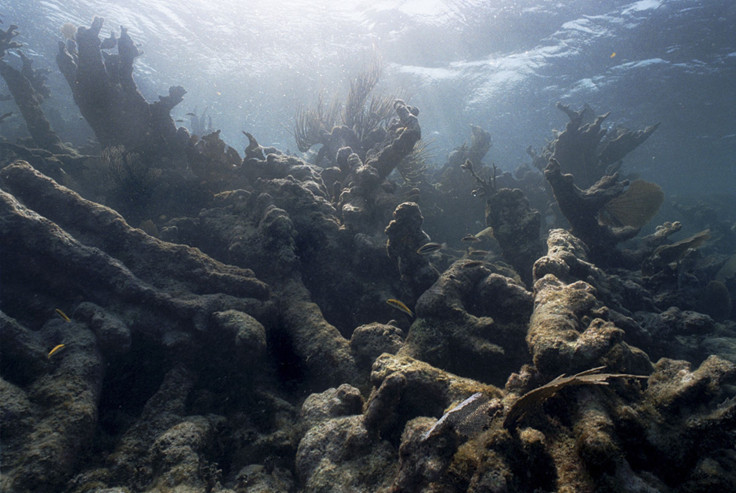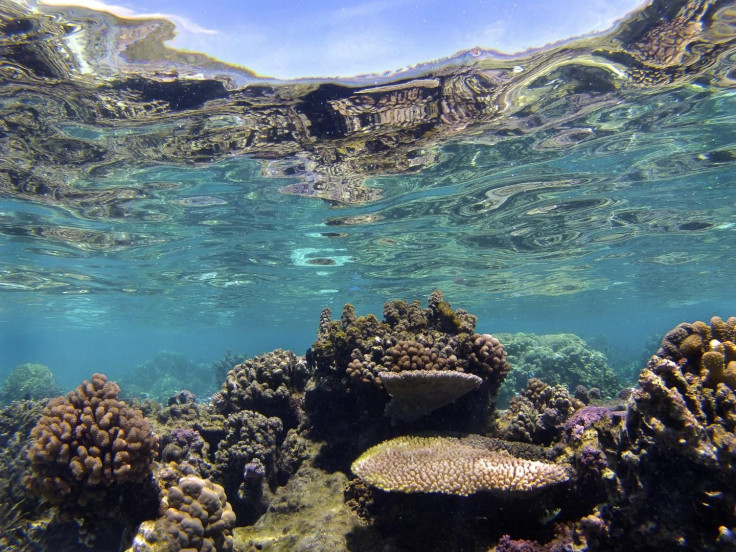Coral Reefs Could Be Saved By Studying Social Eating Habits Of Fish, Research Says

Fish that live near coral reefs play an important role in the ecosystem by eating algae on the reefs, which could otherwise kill the corals and dominate the reef. And understanding the eating habits of reef fish, which it turns out are heavily influenced by social interaction, could be critical in saving the fast-vanishing coral reefs.
Mike Gil from the University of California, Davis, and Andrew Hein from Princeton University published a study Monday in the journal Proceedings of the National Academy of Sciences, which said, “Coral reef fish base decisions to feed on algae or flee from predators on the density and actions of other fish in the landscape, inducing strong temporal correlations in foraging behavior. Using field experiments and a modeling framework, we show that these behavioral interactions can strongly affect the ecological function of reef fish, including the amount of algae fish consume, and the resulting rate at which fish move energy and materials through the reef ecosystem.”

Put simply, the study — titled “Social interactions among grazing reef fish drive material flux in a coral reef ecosystem” — suggests that overfishing in such places would not just remove important algae-eating fish from the ecosystem, but it would also prompt the remaining fish to eat lesser.
“Even though these fish don’t swim in schools, our study shows that they’re influencing one another. They eat more algae when they’re surrounded by more fish. We don’t know why that is, but it likely has to do with safety in numbers. These fish may perceive that their chances of getting killed by a predator, like a shark, are reduced when more prey are around,” Gil said in a statement.
For the study, the researchers attached video cameras to several jungle gym-like stands that were placed inside coral reefs off the island of Mo’orea in French Polynesia, in the South Pacific. Using the cameras, they could remotely observe fish over various sections of the reef, about 200 square feet each. They measured how the fish responded to one another while feeding both in the presence and absence of predators.
© Copyright IBTimes 2024. All rights reserved.











